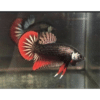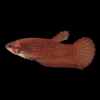-
×
-
×
-
×
-
×
-
×
-
×
-
×
-
×
-
×
-
×
-
×
Assorted Colour Vampire Crab Geosesarma Sp 2-3Cm 1 × £8.71
-
×
-
×
-
×
Subtotal: £409.34











 Assorted Colour Vampire Crab Geosesarma Sp 2-3Cm
Assorted Colour Vampire Crab Geosesarma Sp 2-3Cm 











Emily Carter (verified owner) –
I recently purchased the Betta Sp. Jade, and I couldn’t be happier with my decision! As a passionate aquarium hobbyist, I always look for unique fish that not only thrive in their environment but also add a splash of color to my tank. The Green Api Api Betta arrived in perfect health, showcasing vibrant hues that mesmerized me right away. After a week of settling in with a few live aquarium plants, I noticed how expressive and active he became, often flaring his fins in the presence of my other fish. What really impressed me was his personality; he is curious and loves exploring his space!
I’ve kept various bettas before, but this one stands out due to its rare coloration and temperament. The shipping was prompt, and the packaging ensured he arrived safely, which is vital for any caring fish parent. I would recommend this beautiful betta to anyone looking to enhance their tropical fish collection, especially those who appreciate unique species. Just a tip: give them a well-planted tank to make them feel right at home! Definitely a five-star experience overall!
Emily Carter (verified owner) –
I recently added a Male and Female Betta Sp. Jade to my aquarium, and I couldn’t be happier! As a caring fish parent, I was drawn to their unique green coloration and peaceful temperament. It’s been about two months since they joined my tank, and their vibrant hues bring life to my freshwater setup. Watching them swim gracefully is a true delight!
What sets these Bettas apart from others I’ve kept is their compatibility. Unlike some fighters, these two get along beautifully and have even started to establish their own little territory without aggression. The gentle way they interact makes them perfect companions for beginners like me who are eager to maintain a harmonious aquarium environment.
One minor concern was their initial shyness, but with proper hiding spots and plants, they quickly adapted. I recommend adding plenty of plants to mimic their natural habitat; it helps them feel secure. Shipping was prompt, and they arrived healthy, which always eases a fish lover’s mind. Overall, if you’re looking for stunning tropical fish that are also easy to care for, I wholeheartedly recommend the Betta Sp. Jade! They’re genuinely a joy to have.